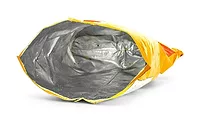Janus Particles Could Hold the Key to More Sustainable Coatings

BINGHAMTON, NY – New research from Binghamton University, State University of New York could lead to more environmentally friendly paints and coatings.
In Roman mythology, the god Janus had two faces so that he could see clearly into both the past and future. Janus particles have a similar dual nature, because they are engineered to have two surfaces each with distinct physical properties. One combination for a Janus particle is to have one side hydrophilic (attracted to water) and the other hydrophobic (water repellent).
Until recently, Janus particles could not be produced in large quantities, and their commercial applications were unclear. A Binghamton coauthored study, led by researchers at Iowa State University, shows that the nanoparticles could be the key to more environmentally friendly paints and coatings.
Xin Yong, an Assistant Professor in the Department of Mechanical Engineering at Binghamton University's Thomas J. Watson College of Engineering and Applied Science, teamed up with Iowa State's Shan Jiang, an Assistant Professor in the university's Department of Materials Science and Engineering, and Chunhui Xiang, an Assistant Professor in its Department of Apparel, Events and Hospitality Management, for a study published in the journal Materials Horizons.
"Previous studies are heavily focused on structures formed by these particles at a very small scale, because they have unique surface properties," Yong said. "In this study, we are trying to use these particles to improve the performance of paints and coating, which no one has ever thought about."
For the paper "Self-stratification of amphiphilic particles at coating surfaces," the research team mixed hydrophilic/hydrophobic Janus particles with commercial paints, then painted surfaces to see how the particles would react.
The result was that the hydrophilic side oriented to the surface and helped the coatings adhere better, while the hydrophobic side faced toward the surface and made it water-repellent. The researchers also found that the particles diffused and arranged themselves into self-stratifying layers more quickly and in ways that did not completely follow their hypotheses.
"Currently no theory can be used to explain the self-stratification behaviors of Janus particles," Jiang said. "However, more studies are warranted to probe the detailed mechanism [of the particles]. I hope by fully understanding the principles in Janus particle self-stratification, we will be able to design next-generation 'smart' coating materials that are more environmentally friendly with better properties."
Looking for a reprint of this article?
From high-res PDFs to custom plaques, order your copy today!





